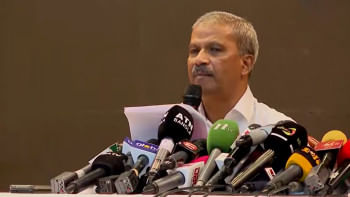Gamification of teaching languages: A realistic prospect?

For a very long time, learning a foreign or second language has come with its fair share of challenges. However, many experts believe the process does not need to be incredibly tedious. To make second language learning more interesting, teaching practice in the classroom needs to change. Such changes can be implemented by gamifying language teaching in the classrooms which means language will be taught through game-based activities where students will be instantly rewarded for their learning outcome. Through this procedure, learners will be able to access their progress, stay motivated throughout their lessons, and actively engage with the course material.
Recently, the gamification of language teaching has been generating attention from Bangladeshi educators due to its effectiveness. Gamification of language teaching has the potential to provide a better language learning experience for students. However, there are challenges to implementing it in Bangladesh.
Sadman Mobtasin, 24, a senior-year student from East West University first encountered gamified language teaching in a university foundation class. As Sadman recollected, "During one of our service courses, which focused on speaking and listening skills, the teacher used gamification elements. The teacher implemented role-playing games comprising a scoring system to help students keep track of their progress."
Labiba Fairuz Hassan, 24, also a senior-year student from Independent University, Bangladesh (IUB), recalled her experience in her foundational English-speaking course, "Our course instructor had students create videos where we had to speak on a topic of our choice."
Nonetheless, Raima*, 23, a junior from BRAC University, said she did not experience any game-based language teaching. She did, however, use Duolingo to learn a foreign language. She said, "I was exposed to gamification through Duolingo and some other language learning apps."
Although each of these students agreed that gamified language teaching motivated them to learn more effectively, they did have some reservations about it.
Sadman said "It may actually put off serious learners who have different types of intelligence. Not everyone learns the same way. Some of the gamified elements may seem out of place for students who are accustomed to different learning methods."
When the concern of limitations was raised, Munshi Nazmus Sakib Aman, a Lecturer in the English department at East West University, who specialises in second language acquisition, stated that it was not an unresolvable issue. He said, "I believe it is a result of narrowing down the definition too much. Gamification does not only mean kinesthetic activities where the students are singing rhymes and making hand gestures. You could assign traditional tasks like filling in the blanks and timing them to see who finishes first."
"As teachers, it is also important to help the students ease into the different activities in a classroom. At the tertiary level, our students come from different schools and colleges in the country. Some of them might find it challenging to adapt to newer methods of teaching and learning. This is nothing a bit of counselling and support cannot solve," he added.
However, Sakib did recognise that there are barriers in terms of gamifying the teaching process in Bangladesh, specifically in state-run classrooms. Recounting his earlier career experience in an NCTB school, he said, "The government school I taught had five teachers including the headmaster for roughly 560 students in six classes. The teachers were earning just enough to pay their bills on the outskirts of this city. I found a projector that had not been used in four years because no one knew how to operate it," he said.
"I taught grades four and five, and neither of the classrooms could manage enough space for the 140 students we had. I, alongside my colleagues, tried to use the corridors to gamify the classes but that would often mean interruptions for the neighbouring classrooms. On the other hand, the English medium school I taught at, and the other school where I was as an academic coordinator made things significantly easier for the students as well as teachers. They had spacious classrooms, well-prepared teachers, and adequate technological support," he explained.
Sakib emphasised the need for policymakers to adapt to the unique reality and challenges, "Some of my students still don't have access to a personal computer even when they are in the third year of their degrees. The policymakers must acknowledge the challenges these language classrooms face. Gamifying everything, everywhere, in the same manner, is not an option."
"We roughly spend two percent of our GDP on education and expect our classrooms to be adequate. Where is the incentive for the institutions to rethink their classrooms?" he inquired. Despite these challenges and shortcomings, Sakib chooses to be optimistic especially considering the enthusiasm of his fellow educators, who, despite obstacles, prioritise students' learning and want to present language learning as an interesting activity.
*Name has been changed upon request
Fariha Lamisa is an English major and a contributing writer for Campus.

 For all latest news, follow The Daily Star's Google News channel.
For all latest news, follow The Daily Star's Google News channel. 









Comments